The Ice Lake Benchmark Preview: Inside Intel's 10nm
by Dr. Ian Cutress on August 1, 2019 9:00 AM EST- Posted in
- CPUs
- Intel
- GPUs
- 10nm
- Core
- Ice Lake
- Cannon Lake
- Sunny Cove
- 10th Gen Core
System Results (15W)
When testing a laptop system, there are various angles to consider on how to test: either user experience benchmarks, that are mostly single threaded and give a good boost to how systems implement a deal of turbo, or sustained benchmarks that test how the system performs when you push it. Intel has gone out of its way to emphasise the former for the next generation of mobile CPUs: they would prefer that reviewers stick to very user experience-like tests, rather than say, rendering programs. The problem there is that outside a number of canned benchmarks, it can be difficult. Users, and especially creators, that typically spend a lot on a premium device, might actually be doing sustained benchmarks.
Given the time that we had to test, we were actually limited in what we could arrange.

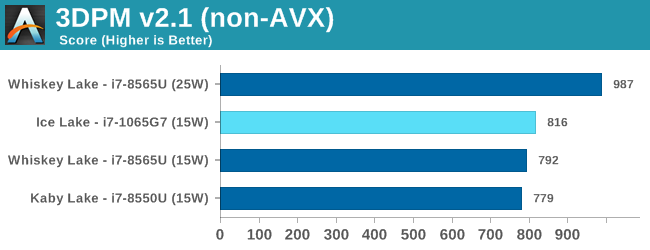

On AVX-512, the Ice Lake part destroys the competition.
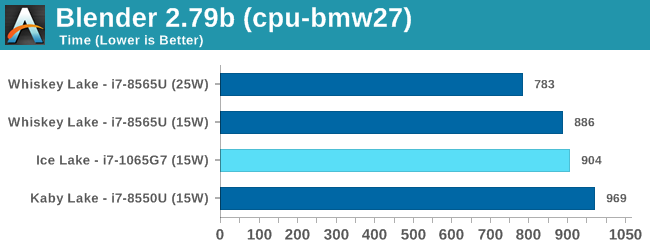
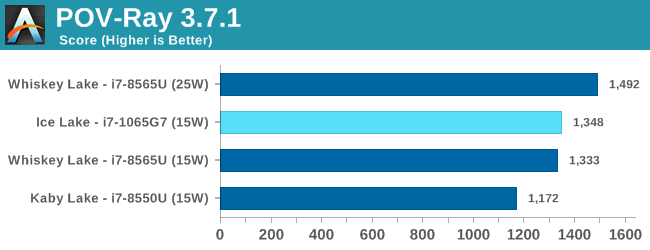


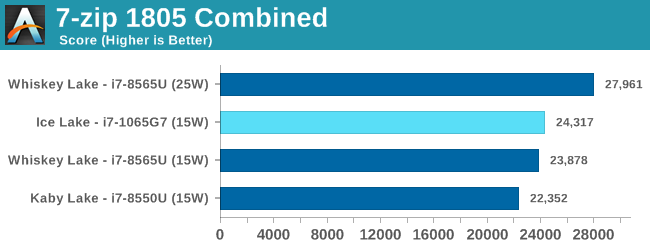
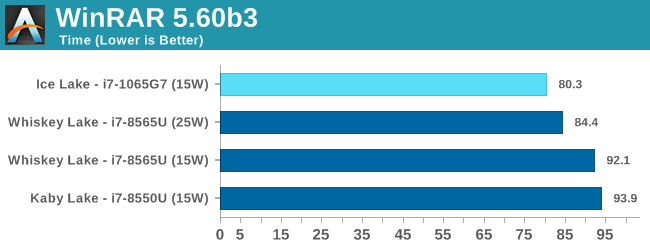
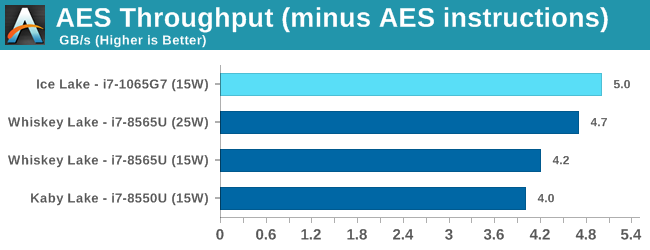
These last two tests are typically our more memory sensitive tests, and the LPDDR4X-3733 really does win out over the LPDDR3-2133 in the other systems.










261 Comments
View All Comments
HStewart - Thursday, August 1, 2019 - link
Keep in mind AMD 7nm die does not mean higher transistors than Intel 10nm Because under different process companies. Lower number does not always mean betterzodiacfml - Friday, August 2, 2019 - link
I'm saying that Intel's die/wafer is probably larger than AMD's 7nm die considering the decent IGP that comes with the Intel chip. I realized my comment is pointless though considering AMD has not released a 7nm APU yet for a proper comparison.Phynaz - Thursday, August 1, 2019 - link
Yawn, another AMD troll that doesn’t know what a laptop is.Tyler_Durden_83 - Thursday, August 1, 2019 - link
My God these new ICL parts are, considering the wait, even more yawn than the 2080 super was...shabby - Thursday, August 1, 2019 - link
I think it would be smart to wait for retail laptops to hit the market before drawing a conclusion on ice lake, who knows what tweaks this ringer laptop from intel has.GreenReaper - Friday, August 2, 2019 - link
Having the fan running on full all the time is kinda cheating to start with. You wouldn't actually want that as a laptop experience. However, the laptops were actually designed for OS testing (where you typically want to avoid throttling to have clean data) so I can cut them a bit of slack there.masimilianzo - Thursday, August 1, 2019 - link
I am sorry it was not clear to me if the 3.9GHz turbo frequency was kept for all the duration of the Spec2k6/2k17 benchmark runs.prophet001 - Thursday, August 1, 2019 - link
Any idea on when desktop SKUs will be coming?Eris_Floralia - Thursday, August 1, 2019 - link
If you are talking about traditional socketed DT parts, the answer is never.DanNeely - Thursday, August 1, 2019 - link
There aren't any 10nm desktop parts on leaked roadmaps out to 2021.If you trust the leaks from Semi-Accurate there probably never will. Of the 4 planned 10nm fabs one was upgraded to 14nm (from an even older process); one or two others are getting 7nm tooling. That leaves 10nm capacity at 25-50% of originally planned numbers meaning they're never going to make 10nm in high volume which in turn means that large chunks of the market will probably go directly to 7 in a few years after lingering at 14.